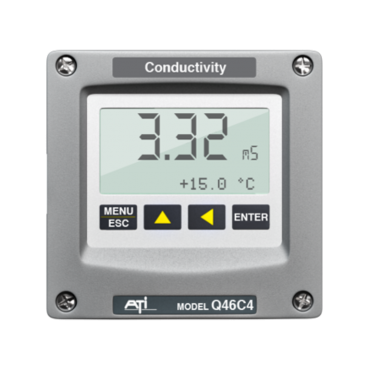Conductivity Sensor
While it is a common belief that water is a good conductor of electricity, pure water is not. In reality, pure water that does not contain ions or other microscopic particles is actually a poor conductor of electricity. Thus, for various industries, analysing the water composition for the possibility of conducting electricity is a crucial task. A conductivity sensor is used to analyse the number of ions in the water as well as its capacity for conduction. This equipment is often used in treating drinking water and wastewater.
The principles behind a conductivity sensor are quite simple. Since the presence of ions and other particles in the water can make it a good conductor, one can detect pure water from a contaminated one using a conductivity sensor. You can find a wide range of conductivity sensors here at Ansac Technology which you can order online.
Advantages of Conductivity Sensor
Accurate measurement:
Conductivity sensors provide precise measurement of electrical conductivity, ensuring accurate monitoring and control.
Versatile for liquids:
These sensors are compatible with a wide range of liquids, suitable for diverse applications.
Real-time monitoring:
Conductivity sensors enable continuous monitoring of conductivity levels for prompt adjustments and quality control.
Process optimization:
They contribute to improved process efficiency and cost-effectiveness by optimizing resource usage and reducing waste.
Automation integration:
Conductivity sensors seamlessly integrate with automation systems, enhancing operational efficiency and enabling informed decision-making.
FAQs about Conductivity Sensor
What is a conductivity sensor?
A conductivity sensor is a device that measures the electrical conductivity of a liquid. It consists of electrodes that come into contact with the liquid, allowing for the measurement of its ability to conduct an electric current. Conductivity sensors are used in industries such as water treatment, food and beverage, and pharmaceuticals to ensure quality control and process optimization.
What is an example of a conductivity sensor?
A common example of a conductivity sensor is a two-electrode sensor, which uses metal electrodes to measure the electrical conductivity of a liquid. It is widely used in applications like water quality monitoring and industrial process control for accurate conductivity measurement and process optimization.
How does a Conductivity Sensor works?
A conductivity sensor typically consists of two electrodes placed in contact with the solution. When an electrical voltage is applied across these electrodes, the sensor measures the electrical current that flows through the solution. The magnitude of the current is directly proportional to the solution's conductivity. Sensors may vary in design, including two-electrode and four-electrode configurations, to improve accuracy and reduce polarization effects.
What are the key factors that can affect conductivity measurements?
Several factors can influence conductivity measurements, including temperature, electrode material, electrode geometry, and the presence of interfering substances. Most conductivity sensors are equipped with temperature compensation to account for temperature variations, as conductivity is temperature-dependent.
 Call Us
Call Us 




